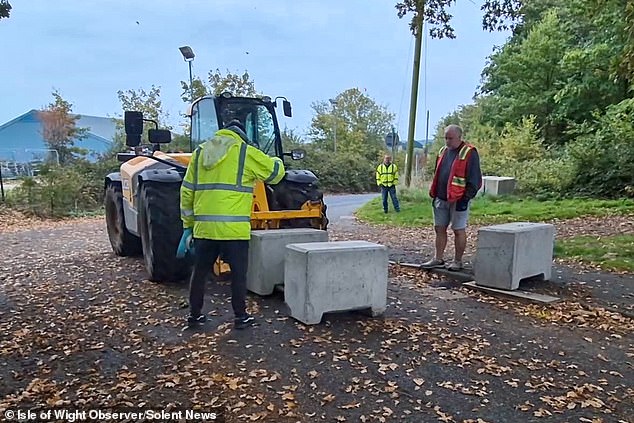Residents living near the historic Parkhurst Prison on the Isle of Wight have reached their breaking point.
For five long months, massive concrete bollards blocked access to their homes and main roads—despite repeated pleas for answers.
What began as a temporary road safety measure turned into a full-blown standoff between locals and the Ministry of Justice (MoJ).
A Road Closed for ‘Security’ Reasons
Back in May, the heavy concrete barriers were placed on a residential street near the prison, supposedly to “maintain prison security and public safety” during temporary roadworks.
But what followed was chaos for those living nearby.
Dozens of households suddenly found their routes blocked, some unable to reach their properties easily, even though they had legal rights of access.
The prison service justified the move by claiming that the road had become a “rat-run” — a shortcut used by too many vehicles during construction work.
But for the locals, the explanation didn’t hold up after months of silence and zero visible progress.
Taking Matters Into Their Own Hands
After countless emails and no response from the MoJ or prison officials, residents finally decided they had waited long enough.
Over the weekend, footage emerged showing them using a forklift truck to lift and remove the bollards themselves.
Holding up handmade signs that read, “Why are the bollards still here?” they made it clear that their patience had worn thin.
Local resident Margaret Cassell expressed the community’s shared anger: “All we want is an answer from the Ministry of Justice as to why our road has been blocked.
We gave them every opportunity to work with us, but enough is enough. If they replace the bollards, we’ll just keep moving them until they give in.”
Political Pressure Mounts
Parkhurst councillor Andrew Garrett and Isle of Wight West MP Richard Quigley both criticized the Ministry of Justice for its handling of the situation, calling the lack of transparency “deeply concerning.”
They pointed out that the barriers not only caused daily frustration but also posed risks for disabled residents and emergency services, potentially breaching public rights of way.
Councillor Garrett described the government’s silence as “disappointing and frustrating,” urging the MoJ to engage directly with locals: “Residents are reasonable people. They just want communication and cooperation.”
He confirmed that he had reached out to the prison’s governor and deputy governor to push for a meeting between residents and officials.
A Long-Awaited Response That Never Came
Under public pressure, the MoJ had promised back in August to replace the concrete bollards with more flexible security barriers that would restore full access to residents and emergency vehicles.
However, as weeks turned into months, no progress was made.
When a notice appeared last week about new roadworks nearby, residents feared being completely cut off from emergency access—and that was the final straw.
Prison authorities reportedly instructed a private security guard to call the police during the residents’ protest, but neither the police nor prison staff showed up.
A Street With a Notorious History
The blocked road sits between HMP Parkhurst and HMP Camp Hill—both part of the Island’s infamous “Parkhurst Prison complex.”
The site once housed some of Britain’s most notorious criminals, including the Yorkshire Ripper, the Moors Murderers, and the Kray Twins.
While the prisons themselves are now part of the area’s dark history, locals today are facing their own battle—this time not with criminals, but with bureaucracy.
What Happens Next?
Residents say they’ll continue to remove any new bollards if the MoJ reinstalls them without consultation.
They’re demanding a clear timeline, an open dialogue, and a permanent solution that balances security with community access.
For now, the concrete barriers are gone, but the tension remains.
Whether the Ministry of Justice will finally respond—or face another round of grassroots resistance—remains to be seen.
Share on Facebook «||» Share on Twitter «||» Share on Reddit «||» Share on LinkedIn